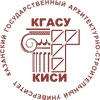About the authors
| First name, Middle name, Last name, Scientific degree, Scientific rank, Current position. Full and brief name of the organization, The organization address. | Taimarov M. A. doctor of technical Sciences, Professor Email: This e-mail address is being protected from spambots. You need JavaScript enabled to view it Kazan State Power Engineering University Address of the organization: 420066, Russia, Kazan, Krasnoselskaya str., 51 Lavirko Yu. V. candidate of technical Sciences associate Professor Email: This e-mail address is being protected from spambots. You need JavaScript enabled to view it Kazan State University of Architecture and Engineering Address of the organization: 420043, Russia, Kazan, Zelenaya str., 1. |
| Title of the article | Gas supply to residential and industrial facilities using energy-saving technologies |
| Abstract. | Problem statement. Gas supply to cities from main gas pipelines requires reducing the pressure of main gas to the value suitable for further supply to industrial and residential facilities of consumers through the gas distribution network. In existing simple schemes, the excess energy of the main gas pressure is spent on overcoming the resistance of the throttle valves, which makes it possible to obtain a reduced gas pressure of the required values. Currently, gas distribution stations for gas supply to industrial and residential facilities start using more complex schemes, in which the pressure of the main gas is reduced from 5.4 MPa at the inlet to 0.6 MPa at the outlet due to the use of turboexpanders on the reduction lines at design gas flow rates up to 180 thousand m3 / h. The average gas consumption values are still from 20 to 40 thousand m3 / h. The main natural gas enters the turboexpander through a high-pressure gas pipeline and then, due to expansion, the gas pressure is converted into mechanical energy of the rotor rotation, which is transferred to the connected electric generator to generate electricity. Turbine expanders with one-sided semi-open radial-axial impellers of various diameters are used, with an increase of which from 150 mm to 550 mm when the pressure is reduced from 5.4 MPa at the inlet to 0.6 MPa at the outlet, the efficiency decreases from 84% to 69% for constant gas consumption equal to 20 thousand m3/h. With a single-stage turboexpander, power generation with a gas consumption of 20 thousand m3 / h and a wheel diameter of 350 mm is 0.6 MW. With an increase in gas consumption, the efficiency increases, which for a flow rate of 40 thousand m3 / h with a wheel diameter of 350 mm is 0.82. The amount of electricity generated increases due to the increase not only in consumption, but also in the increase in the efficiency. Results. The article based on the study proposes a technology for the use of secondary thermal energy resources in the form of waste water for the purpose of increasing the temperature of the main gas sent to the turboexpander to expand and thereby increase the generation of electricity. On the basis of the study, a scheme has been developed in which a turboexpander consists of two rotary stages. One of which is used in a vapor compression heat pump cycle to drive a compressor during waste water heat recovery, and the other rotary stage is used directly to drive an electric generator shaft into rotary motion and generate electricity by external consumers. Since the movement of the main gas between the stages is sequential, in order to increase the generation of electricity, heating of the main gas is applied before each stage. Conclusions. The article solves the problem of energy saving and reducing the cost of natural gas by developing a technology and a scheme for increasing electricity generation when expanding the main gas in a two-stage turboexpander by using a low-potential energy resource in the form of heat waste water from a water treatment system using steam-compression heat pump units, with the help of which the heat of waste water the main gas is supplied before each stage, and the compressors are driven by mechanical energy obtained from the expansion of the main gas at each stage of the turboexpander. |
| Keywords. | gas, supply, main gas, pressure, reduction, expander, energy saving |
| For citations: | Taimarov M. A., Lavirko Yu. V. Gas supply to residential and industrial facilities using energy-saving technologies. Izvestiya KGASU. 2021. No. 3 (57). P. 50–60. DOI: 10.52409/20731523_2021_3_50 |
















